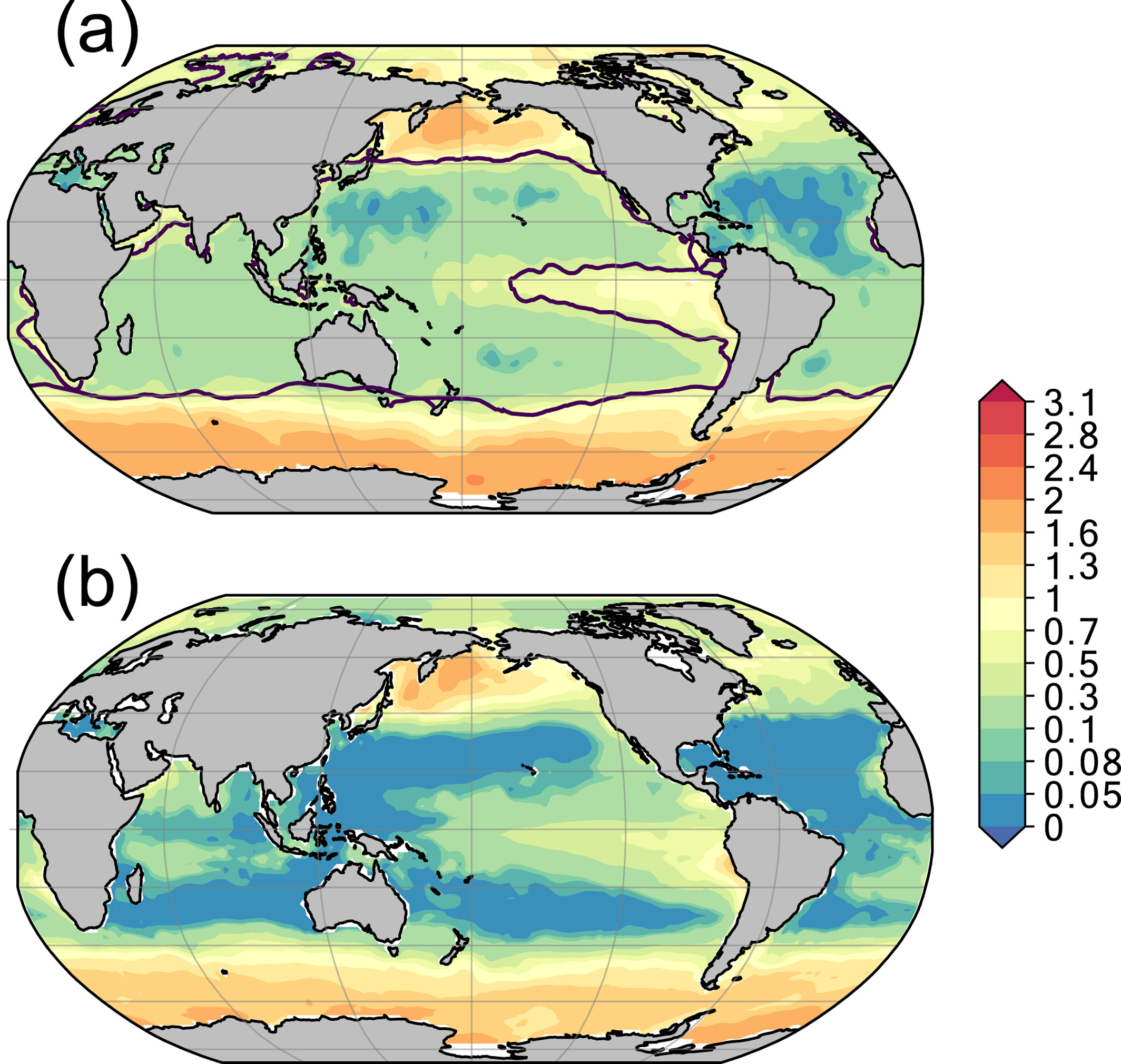Biogeochemical Equilibrium Responses to Maximal Productivity in High Nutrient Low Chlorophyll Regions
Weiwei Fu, Wei-Lei Wang
Published in Journal of Geophysical Research, April 2022
Whether ocean iron fertilization in high nutrient low chlorophyll (HNLC) regions is a practical geoengineering strategy to combat climate warming has been debated because the fate of absorbed carbon by the ocean remains unclear. We use an optimized oceanic biogeochemical inverse model to explore the equilibrium responses to increased productivity in major HNLC regions. We find that an overall downward shift of nutrients and carbon from the surface and intermediate to the deep waters with maximal productivity in the HNLC Southern Ocean (SO), North Pacific (NP) and eastern equatorial Pacific (EP). The efficiency of soft tissue pump is increased by 37.8%, 2.7% and 5.4% in the SO, EP and NP simulation while atmospheric CO2 concentration is drawn down by 45.1, 3.4 and 6.7 ppm, respectively. Meanwhile, global mean oxygen is decreased by 21.1%, 1.3% and 2.4% in the SO, EP and NP simulation, accompanied by an expansion of oxygen minimum zones by 400%, 26% and 63%, respectively. Our study indicates that iron fertilization has the potential to be an effective geoengineering approach to mitigate climate warming but also has a strong impact on the development of ocean hypoxia.

Fig. Surface dissolved inorganic phosphorus (mmol/m3) of (a) WOA18 data and (b) OCIM. The boundary of three major high nutrient low chlorophyll regions was delineated with a black line.
Fu, W., & Wang, W.-L. (2022). Biogeochemical equilibrium responses to maximal productivity in high nutrient low chlorophyll regions. Journal of Geophysical Research: Biogeosciences, 127, e2021JG006636. https://doi.org/10.1029/2021JG006636